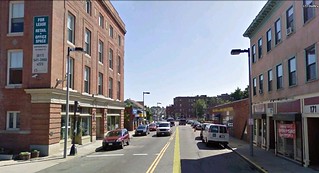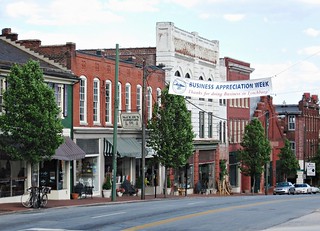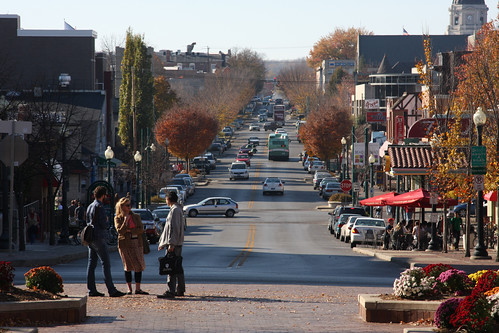New research confirms central-city comebacks

Posted December 18, 2012 at 1:28PM
We can now add even smaller cities with populations under 250,000 to the convincing body of evidence showing that the decades-long trend of urban decline in America has been reversed. In most American cities, the opposite is now true: central cities are growing, and growing faster than their suburbs.
This is immensely hopeful news for those of us who care about sustainability. Nothing has been worse for our environment or, I would argue, our social fabric than the unbridled suburban growth that sprawled across our landscape in the second half of the 20th century, sucking investment and life out of our cities. Although it has become trendy to focus on the so-called “shrinking cities” in the nation’s Rust Belt, the truth is that virtually all American cities were shrinking until quite recently. Even Washington, DC, whose downtown is now considered to be booming, lost 20 percent of its population between 1950 and 2000.
I believe it is just a matter of time before even the Rust Belt cities begin to grow again (some already are), which is why I have urged caution regarding the disturbing trend on the part of some city leaders and advocates to basically give up on these communities’ most disinvested neighborhoods. Boston’s Dudley Street, Cincinnati’s Over-the-Rhine, and St. Louis’s Old North,  until recently the most severely disinvested and abandoned districts in each of those cities, now offer dramatic evidence that comebacks can occur. We should all be glad that their historic fabric – much of it, at least – was not demolished, allowing those neighborhoods to recover when the time came.
until recently the most severely disinvested and abandoned districts in each of those cities, now offer dramatic evidence that comebacks can occur. We should all be glad that their historic fabric – much of it, at least – was not demolished, allowing those neighborhoods to recover when the time came.
Earlier this year, I wrote about an analysis of 2011 census data on the 73 US cities with populations greater than 250,000, showing that 52 of them are now growing faster than their regional averages. Indeed, primary cities in large metropolitan areas with populations of more than one million grew by 1.1 percent last year, compared with 0.9 percent in surrounding suburbs. Cities switching from declines to gains included even Pittsburgh and Milwaukee, both older industrial cities thought to be in decline. I presented a lot of discussion in that article about why I think the reversal of fortune for cities is likely to stay; I won’t repeat it here.
Newly released analysis of Census data from Smart Growth America reveals that smaller cities are growing, too – and most are growing faster than their suburbs. The organization calculated population change between 2010 and 2011 in 171 of the nation’s smaller metropolitan areas of 150,000 or more people. Overall, 22 percent of the U.S. population – more than 69 million people – live in these small metro areas. Of these, 39 percent, or 27 million people, live in the census-defined cities of the small metro areas.
Between 2010 and 2011, 86 percent of small metro areas saw an increase in the number of people living in the city. Both cities and suburbs in these areas gained population, but the overall rate of suburban growth was somewhat less than that of the cities. A little more than half – 55 percent – of the individual cities grew faster than their suburbs.  This is a stark reversal: in our 1999 book Once There Were Greenfields, we reported that, between 1988 and 1996, central cities together had suffered a net outmigration of over two million people in each year, while suburbs experienced a collective net gain of between two and three million people each year.
This is a stark reversal: in our 1999 book Once There Were Greenfields, we reported that, between 1988 and 1996, central cities together had suffered a net outmigration of over two million people in each year, while suburbs experienced a collective net gain of between two and three million people each year.
According to Smart Growth America, the top ten small metros where cities added population at a greater rate than their suburbs were these:
- Clarksville, TN-KY
- Lexington-Fayette, KY
- Fort Smith, AR-OK
- Lynchburg, VA
- Athens-Clarke County, GA
- Lincoln, NE
- Davenport-Moline-Rock Island, IA-IL
- Greensboro-High Point, NC
- Bloomington, IN
- Durham-Chapel Hill, NC
The report may be downloaded here.
SGA’s statement issued with the new analysis says that the results are surprising, but I believe they should only be surprising to people unaware of demographic trends over the last decade. For me, these new data only confirm and strengthen the findings of closely related research. Cities are back.
Note: I am a board member and founder of Smart Growth America, but I was uninvolved in this research and only became aware of it when it was released.
Related posts:
- Central cities now growing faster than suburbs, confirming trends for walkable lifestyles, shorter commutes (June 29, 2012)
- How the evolving housing market will help sustainable communities (April 4, 2012)
- Rust Belt cities: to avoid more shrinkage, protect & strengthen the core (January 4, 2012)
- Geography of housing recovery favors cities and walkable neighborhoods (October 26, 2011)
- Personal income stats: older cities in the East & Midwest are rebounding (February 1, 2011)
- Housing market strengthens for smart growth: dramatic new data from the DC area (April 26, 2010)
- Major real estate report: shift to urban living is “fundamental,” outer suburbs may “lack staying power” (November 10, 2009)
- They are stardust. They are golden. But are they right about “shrinking cities”? (July 2, 2009)
- Sprawl's share of new US housing starts has declined dramatically, says EPA (March 3, 2009)
Move your cursor over the images for credit information.

